Related Research Articles

American Impressionism was a style of painting related to European Impressionism and practiced by American artists in the United States from the mid-nineteenth century through the beginning of the twentieth. The style is characterized by loose brushwork and vivid colors with a wide array of subject matters but focusing on landscapes and upper-class domestic life.

Mary Elizabeth Price, also known as M. Elizabeth Price, was an American Impressionist painter. She was an early member of the Philadelphia Ten, organizing several of the group's exhibitions. She steadily exhibited her works with the Pennsylvania Academy of the Fine Arts, the National Academy of Design, and other organizations over the course of her career. She was one of the several family members who entered the field of art as artists, dealers, or framemakers.

William Langson Lathrop was an American Impressionist landscape painter and founder of the art colony in New Hope, Pennsylvania, where he was an influential founder of Pennsylvania Impressionism.
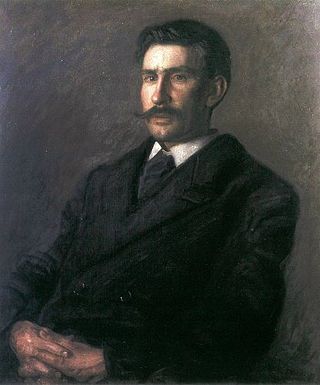
Edward Willis Redfield was an American Impressionist landscape painter and member of the art colony at New Hope, Pennsylvania. He is best known today for his impressionist scenes of the New Hope area, often depicting the snow-covered countryside. He also spent his summers on Boothbay Harbor, Maine, where he interpreted the local coastline. He frequently painted Maine's Monhegan Island.

Daniel Garber was an American Impressionist landscape painter and member of the art colony at New Hope, Pennsylvania. He is best known today for his large impressionist scenes of the New Hope area, in which he often depicted the Delaware River. He also painted figurative interior works and excelled at etching. In addition to his painting career, Garber taught art at the Pennsylvania Academy of the Fine Arts for over forty years.
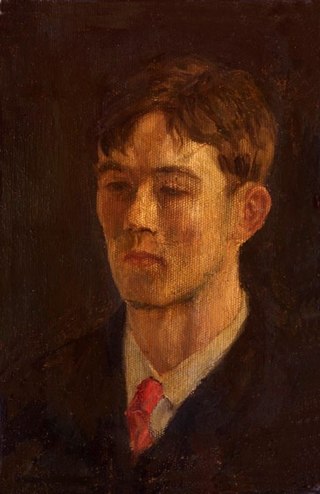
Walter Emerson Baum was an American artist and educator active in the Bucks and Lehigh County areas of Pennsylvania in the United States. In addition to being a prolific painter, Baum was also responsible for the founding of the Baum School of Art and the Allentown Art Museum.
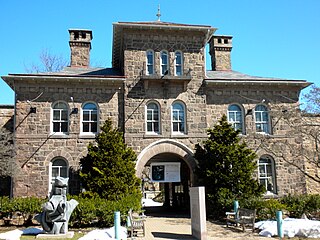
The Michener Art Museum is a private, non-profit museum that is located in Doylestown, Bucks County, Pennsylvania. Founded in 1988, it was named for the Pulitzer Prize–winning writer James A. Michener, a Doylestown resident.

Pennsylvania Impressionism was an American Impressionist movement of the first half of the 20th century that was centered in and around Bucks County, Pennsylvania, particularly the town of New Hope. The movement is sometimes referred to as the "New Hope School" or the "Pennsylvania School" of landscape painting.
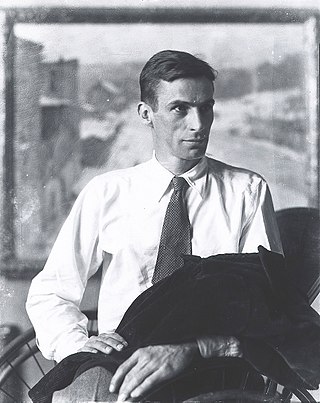
John Fulton "Jack" Folinsbee was an American landscape, marine and portrait painter, and a member of the art colony at New Hope, Pennsylvania. He is best known today for his impressionist scenes of New Hope and Lambertville, New Jersey, particularly the factories, quarries, and canals along the Delaware River.

Fern Isabel Coppedge was an American impressionist painter.

Mary Jane Peale was an American painter. She was the child of Rubens and Eliza Burd Patterson Peale, the only daughter among seven children, and was the granddaughter of Charles Willson Peale. She was among the last members of the Peale family to paint professionally, studying with her uncle Rembrandt and with Thomas Sully in Philadelphia, and was enrolled at the Pennsylvania Academy of Fine Arts.

Frederick R. Wagner was one of the earliest of the Pennsylvania impressionists. He was born in Port Kennedy, Pennsylvania, grew up in Norristown, and spent most of his life in Philadelphia painting its harbors, bridges, parks, train stations and ports.

William Newport Goodell (1908–1999) was an American artist, craftsman, and educator. He was born August 16, 1908, in Germantown, Philadelphia and briefly attended the Pennsylvania Academy of the Fine Arts (PAFA), including its country school in Chester Springs, studying under Pennsylvania impressionist Daniel Garber and noted academician Joseph Thurman Pearson, Jr., before opening his own studio on Germantown Avenue in 1929.

Charles Rosen was an American painter who lived for many years in Woodstock, New York. In the 1910s he was acclaimed for his Impressionist winter landscapes. He became dissatisfied with this style and around 1920 he changed to a radically different cubist-realist (Precisionism) style. He became recognized as one of the leaders of the Woodstock artists colony.
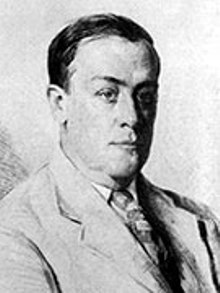
Rae Sloan Bredin was an American painter. He was a member of the New Hope, Pennsylvania school of impressionists. He is known for his peaceful spring and summer landscapes with relaxed groups of women and children.
Elizabeth Fisher Washington (1871–1953) was an American portrait and landscape painter.

Robert Beck is an American painter and writer. He is best known for his plein air paintings of scenes in and around Bucks County, Pennsylvania ; Jonesport, Maine; and New York City, typically in multiple-painting series.

Walter Elmer Schofield was an American Impressionist landscape and marine painter. Although he never lived in New Hope or Bucks County, Schofield is regarded as one of the Pennsylvania Impressionists.
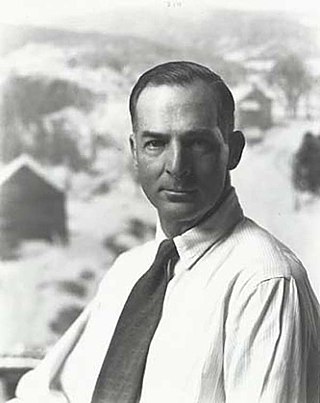
Harry "Tony" Leith-Ross was a British-American landscape painter and teacher. He taught at the art colonies in Woodstock, New York and Rockport, Maine, and later was part of the art colony in New Hope, Pennsylvania. A precise draftsman and a superb colorist, Leith-Ross is considered one of the Pennsylvania Impressionists.

Mary Smyth Perkins Taylor (1875–1931) was an American Impressionist painter and fabric artist. She was a member of a group of artists centered in Bucks County, Pennsylvania known as the Delaware Valley group, or the Pennsylvania Impressionists.
References
- ↑ Peterson, Brian H; Gerdts, William H (2002-01-01). Pennsylvania impressionism. Doylestown, PA; Philadelphia: James A. Michener Art Museum ; University of Pennsylvania Press. ISBN 0812237005. OCLC 49936175.
- ↑ Fielding, Mantle; Opitz, Glenn B (1986-01-01). Mantle Fielding's dictionary of American painters, sculptors & engravers . Poughkeepsie, NY: Apollo. ISBN 0938290045.
- ↑ Peterson, Brian H; Gerdts, William H (2002-01-01). Pennsylvania impressionism. Doylestown, PA; Philadelphia: James A. Michener Art Museum ; University of Pennsylvania Press. ISBN 0812237005. OCLC 49936175.
- ↑ Peterson, Brian H; Gerdts, William H (2002-01-01). Pennsylvania impressionism. Doylestown, PA; Philadelphia: James A. Michener Art Museum ; University of Pennsylvania Press. ISBN 0812237005. OCLC 49936175.
- ↑ Who Was Who in American Art; Who's Who in American Art." American Art Annunals (1930, 1942)
- ↑ Peterson, Brian H; Gerdts, William H (2002-01-01). Pennsylvania impressionism. Doylestown, PA; Philadelphia: James A. Michener Art Museum ; University of Pennsylvania Press. ISBN 0812237005. OCLC 49936175.